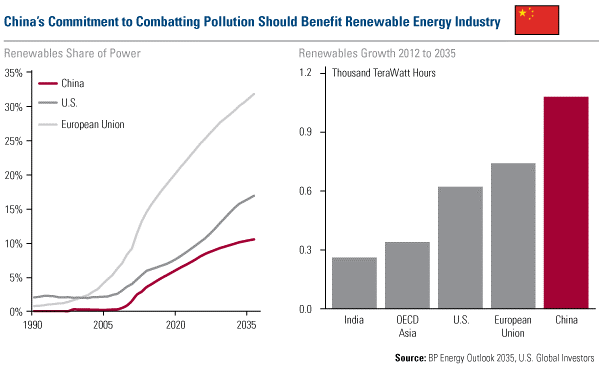Gold’s
Bull Days Are Back?
Gold is coming back with a vengeance, experiencing a clear recovery and
grabbing the attention of market cynics. Analysts from Noruma Securities even
upgraded its outlook for gold, expecting bullion to climb over the next three
years, according to Barron’s.
Nomura analysts
attribute their increased gold forecast to real interest rates that “don’t seem
to be heading anywhere at the moment.” In addition, there appears to be
“long-term demand support from Asian nominal income growth, an evolving post-QE
macroeconomic environment and lower disinvestment potential.”
Gold is
also gleaming a little brighter in Japan, as its central bank announced that
monetary policies will remain very accommodative. With a weakening yen, gold
will likely be seen as a store of value for Japanese investors.
Palladium
Near Its Highest Level in Almost a Year
Two global events recently colluded that dramatically affected the palladium
and platinum market. The situation in Ukraine and Russia along with
six-week-long strikes in South Africa began raising concerns that these
palladium-rich countries may not be able to continue supplying the commodity at
normal levels.
Currently
South Africa supplies around 37 percent of the world’s palladium; Russia
supplies close to 40 percent of the world’s palladium.
What
does this all mean for the palladium and its sister platinum? It seems that
fear surrounding the international political landscape is helping to push the
precious metals prices higher and higher.
You can
see the effect the political landscape is having on palladium. Over the past
year, the metal has mainly traded sideways, but this week hit its highest level
in almost a year. The precious metal reached $775 per ounce while its sister,
platinum, climbed to nearly $1,500 an ounce.

In January, I indicated that platinum and palladium looked
extremely compelling.There
were supply and demand drivers I felt would drive the metals higher.
Just
last week, the U.S. Mint is “ending a four-year exit from the market” by
selling one-ounce American Eagle platinum bullion coins, writes Frank Tang from
Reuters. According to a wholesaler last week, initial demand is strong, as
1,000 coins have already been scooped up.
Like I
discussed with Resource Investing News at the Vancouver Resource Investment
Conference, industrial demand has been gaining strength. Take rising automobile
sales in the U.S. thatI talked about a few months ago. With interest rates on
car loans so low, Americans have been replacing their clunkers with more fuel
efficient cars, which is positive for platinum and palladium.
It’s a
similar story in emerging markets. In Africa, the GDP without a leveraged
economy is still growing at 5 percent, and you definitely need platinum and
palladium for their vehicles, even if they are diesel.
In
China, vehicle sales last year rose faster than expected, climbing nearly 14
percent compared to a year earlier, according to the China Association of
Automobile Manufacturers. The country is already the biggest automobile market
in the world and millions of new cars on the roads add up fast.
We’re
pleased that our technical models signaled initial bullish signs, as our
palladium- and platinum-related holdings helped boost the returns of the Gold
and Precious Metals Fund (USERX) and the World Precious Minerals Fund (UNWPX).
Renewable
Energy Could Get You More Green
In our
webcast last week, Brian Hicks, portfolio manager of the Global Resources Fund
(PSPFX), talked about four opportunities he sees in resources over 2014.
One
relates to China’s focus on alternative energy.
See the other three opportunities now.
In BP’s
latest Energy Outlook 2035, you can see the incredible long-term growth
anticipated in the renewable energy industry. In terms of volume growth, China
is expected to surpass the European Union countries by 2035. Based on this
secular transformation, the local clean energy sector should continue to
benefit.

Specifically,
wind power and solar look especially attractive, especially given the excessive
pollution in the Asian giant. Take a look at CLSA data: In 2009, the country
had about 0.2 percent of the global market. By 2014, it’s estimated to grow to
one third of the global market.
China
isn’t the only country with a growing renewable energy market. After the
massive earthquake hit Japan in 2011, the solar market is taking off there too.

If you
were too busy to tune into our webcast last week, you missed a good discussion
among Brian Hicks, John Derrick and me. It was an hour chock-filled with
investing ideas in the U.S. market, emerging countries, resources and gold.
However, it’s not too late to watch the replay at your leisure this weekend.
Please consider carefully a fund’s investment objectives, risks,
charges and expenses. For this and other important information, obtain a fund
prospectus by visiting www.usfunds.com or by calling 1-800-US-FUNDS
(1-800-873-8637). Read it carefully before investing. Distributed by U.S.
Global Brokerage, Inc.
Past performance does not guarantee future results.
Foreign and emerging market investing involves special risks such
as currency fluctuation and less public disclosure, as well as economic and
political risk. Gold, precious metals, and precious minerals funds may be
susceptible to adverse economic, political or regulatory developments due to
concentrating in a single theme. The prices of gold, precious metals, and
precious minerals are subject to substantial price fluctuations over short
periods of time and may be affected by unpredicted international monetary and
political policies. We suggest investing no more than 5% to 10% of your
portfolio in these sectors.
Because the Global Resources Fund concentrates its investments in
specific industries, the fund may be subject to greater risks and fluctuations
than a portfolio representing a broader range of industries.
http://www.usfunds.com/investor-library/frank-talk/#.UyHax_ldWao
Disclaimer: This article was posted with the permission
of a third-party contributor and the opinions contained therein do not
necessarily reflect those of Smallcappower. Smallcappower does not endorse
any investment advice provided by these third-party contributors. Please
consult your investment advisor before making any investment
decisions.
Ubika Corporation and its divisions Smallcappower, Ubika
Communication and Ubika Research are not registered with any financial or
securities regulatory authority in Ontario or Canada, and do not provide
nor claims to provide investment advice or recommendations to any visitor of
this site or readers of any content on this site. – See more at: http://www.smallcappower.com/posts/small-cap-power-disclosure#.UoJQkZEq_vw


